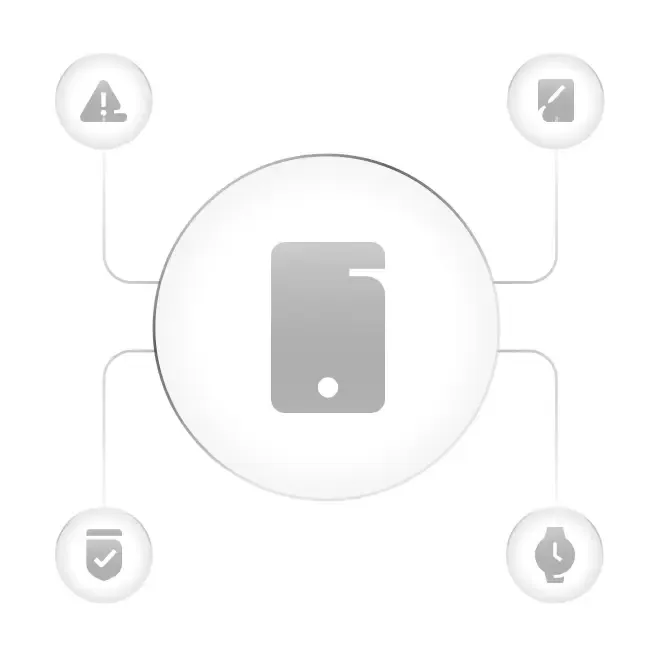Confidentiality and Social Media Policy
It’s better to be safe than sorry! With that in mind, social media policy establishes guidelines for interacting on social platforms without compromising the company's image. It sets out rules for using both personal and company social media accounts, securing internal information, and outlines potential disciplinary actions for violations.

Created by
Ahmed Abdel Wahab
|
Human Resources Adviser
Share the calculator with an HR college
What’s included in the Social Media policy?
Social media & confidentiality Policy provides a clear and concise set of rules for how employees should conduct themselves online. This applies to both their personal accounts, which could impact the company's image or compromise internal information, and when acting as representatives for company accounts.
The confidential data policy also includes guidelines for protecting brand privacy and legal interests. It addresses how to handle sensitive information that should never be made public, such as internal news, client data, or strategies. Furthermore, it outlines the qualifications required for anyone representing the company on social media platforms.
The social media policy and procedures also details the consequences of failing to adhere to the company's social media guidelines, including the scope of disciplinary actions that will be taken. It explicitly states the company's right to review employees' personal accounts to assess their compliance with these guidelines.
Social Media Policy - Table of contents
1. overview
2. Company Representation on Social Media
3. Disclosure of Internal Information
4. Prohibited Online Behavior
5. Monitoring & Compliance
Why do you need a social media policy?
To encourage employees to act responsibly on social media platforms.
To protect the company from legal complexities related to publication violations.
To reduce the likelihood of a public relations crisis or information leak.
To maintain a consistent brand image across all public platforms.
How do you use the model?
Download the template and review the content.
Customize it with name, logo, scope of freedom and internal matters.
Share with the marketing team and Jisr HRMS.
Ensure compliance by getting Social Media policy reviewed by a legal/HR expert.
See Jisr in action
Scale HR operations, manage talent, control spend – all in one platform with Jisr. Get started in weeks, not months.

FAQs
To write a good company social media policy, follow these steps:
Outline acceptable and unacceptable behavior, like revealing secrets or sharing offensive content.
Advise employees against airing workplace issues (manager, colleagues, customers) on social media to avoid disciplinary action.
Remind staff about discriminatory, bullying, libelous, or offensive content.
Prohibit employees from using work email for personal social media, forums, or shopping unless work-related.
Employees should not claim to represent company views unless authorized, and be aware of industry-specific restrictions.
Emphasize that online content is public and often permanent, advising against anything that compromises personal safety or breaches confidentiality.
Social media etiquette, while varying by platform (e.g., Instagram reposts versus X retweets), has universal principles. Key "dos and don'ts" include avoiding excessive self-promotion by blending valuable and promotional content. Don't over-automate; some interactions require a human touch. Use hashtags carefully, even where many are permitted, to avoid clutter. Crucially, never bad-mouth competitors, as it damages your own reputation. Above all, be authentic and genuine; transparency and sincerity build trust and resonate strongly with customers.
The rules for social media etiquette focus on fostering positive and respectful online interactions. Here they are:
Communicate respectfully and constructively: Always be polite, even if you disagree with someone. Avoid personal attacks, offensive language, and cyberbullying.
Prioritize privacy and data protection: Don't share others' personal information without their permission, and always be aware of your data security and privacy settings.
Share content responsibly: Always verify information for accuracy before posting to prevent spreading misinformation.
Ensure proper attribution and copyright: Always credit creators when you share their work. Respect copyright laws by not plagiarizing or using copyrighted material without permission.
An example of confidentiality in the workplace is restricting access to sensitive company data, like financial records, to only the specific employees who directly work with that information.
This is achieved through measures such as encrypting files with passwords, using secure storage platforms that prohibit outside access, and implementing systems that restrict permissions to certain documents. This prevents other workers from accidentally or intentionally viewing confidential information.
Confidentiality in the workplace rules focus on protecting sensitive information. Key measures include:
Encrypting digital information and safeguarding databases.
Requiring employees to sign non-compete and/or non-disclosure agreements (NDAs).
Demanding management authorization for employees to access specific confidential information.